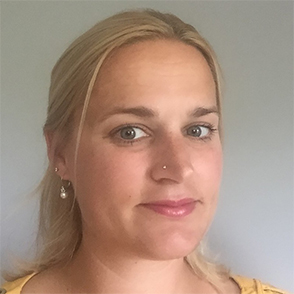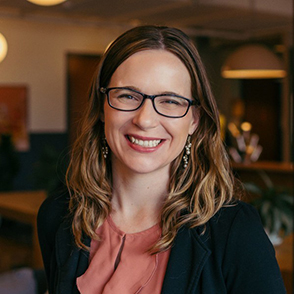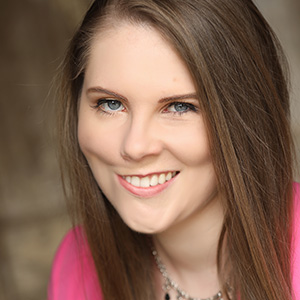
Turning the ‘art' of scicomm into a full-time job
The Art of Science Communication course, or ASC, was designed to help grad students and postdocs explain their research to nonexperts. For Christina Nixon and Sarah Ellinwood, it did much more.
Taking the eight-part online course offered by the American Society for Biochemistry and Molecular Biology propelled the two scientists out of academia and into the professional science communication arena.
When Nixon and Ellinwood took the ASC, both were working at the bench in academic labs, Nixon as a senior research scientist at Brown University and Ellinwood as a graduate student at the University of Maryland.

Nixon gave the course a shot because she felt stagnant in her career.
“At Brown, I was thinking ‘Am I really in the right place for me? Am I doing what I like to do?’” she said.
Ellinwood stumbled on the course while trying to pinpoint where she wanted to land after her Ph.D.
Both women credit the ASC with opening their eyes to careers in scicomm.
“I didn’t really know what else you could do outside of academia and industry,” Ellinwood said. “I realized, after giving some presentations and doing some soul searching, that I liked talking about science more than doing the science itself.”
The ASC expanded Nixon’s professional network, exposing her to science and medical communicators.

“The course opened up a little bit of a new world to me,” she said.
Ellinwood now runs her own freelance science communication business, where she offers brand strategy and messaging, public relations, project management and marketing services.
“The course unlocked my creative side again,” Ellinwood said. “It gave me that liberty and permission to be creative in science. Science and art are not mutually exclusive.”
Nixon works as the senior scientific director of medical and scientific services at Alphanumeric Systems.
“The course helped me realize the bigger picture,” Nixon said. “I started to realize that what I wanted to do was be a better communicator of science for folks who are trying to take advantage of all that research that we’ve been doing.”
Nixon said she feels privileged to share amazing scientific findings with the public.
As controllers of the data and the messages, “We get to put on a little white hat,” Nixon said.
“As medical writers,” she said, “it’s our job to make sure that the messages being conveyed are accurate, understandable and true to the science.”
When Ellinwood worked in public relations and pitched stories to reporters, she said she always fell back on what the course taught her about audiences.
“Taking the extra time to really look into your audience’s needs and figuring out what they actually care about can have a big impact,” Ellinwood said.
Ellinwood reinforces this principle while training junior writers.
“I always tell them, ‘In media, everything is moving at such a fast pace, and you don’t want to take an extra hour to think about the audience, but I promise your writing is going to be so much more impactful if you do.”
Both women have led a cohort of students through the ASC.
“I wanted to give back to the course and the community,” Ellinwood said. “It had such a big impact on me and made me fall in love with science communication.”
Enjoy reading ASBMB Today?
Become a member to receive the print edition four times a year and the digital edition monthly.
Learn moreFeatured jobs
from the ASBMB career center
Get the latest from ASBMB Today
Enter your email address, and we’ll send you a weekly email with recent articles, interviews and more.
Latest in Careers
Careers highlights or most popular articles

Embrace your neurodivergence and flourish in college
This guide offers practical advice on setting yourself up for success — learn how to leverage campus resources, work with professors and embrace your strengths.

Upcoming opportunities
Apply for the ASBMB Interactive Mentoring Activities for Grantsmanship Enhancement grant writing workshop by April 15.

Quieting the static: Building inclusive STEM classrooms
Christin Monroe, an assistant professor of chemistry at Landmark College, offers practical tips to help educators make their classrooms more accessible to neurodivergent scientists.

Unraveling oncogenesis: What makes cancer tick?
Learn about the ASBMB 2025 symposium on oncogenic hubs: chromatin regulatory and transcriptional complexes in cancer.

Exploring lipid metabolism: A journey through time and innovation
Recent lipid metabolism research has unveiled critical insights into lipid–protein interactions, offering potential therapeutic targets for metabolic and neurodegenerative diseases. Check out the latest in lipid science at the ASBMB annual meeting.

Hidden strengths of an autistic scientist
Navigating the world of scientific research as an autistic scientist comes with unique challenges —microaggressions, communication hurdles and the constant pressure to conform to social norms, postbaccalaureate student Taylor Stolberg writes.

